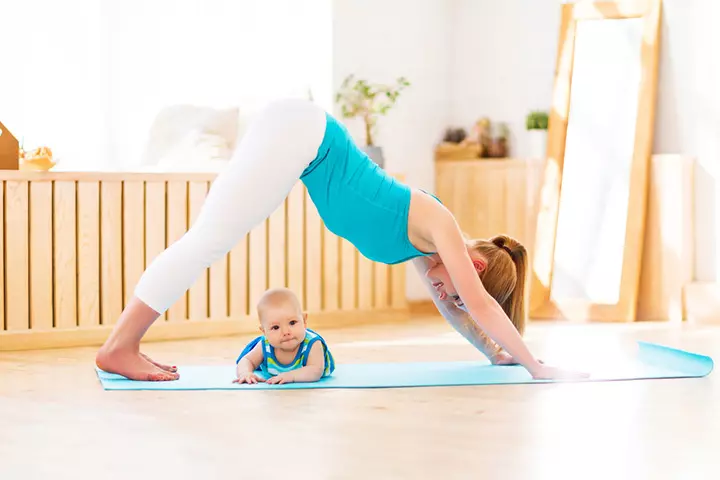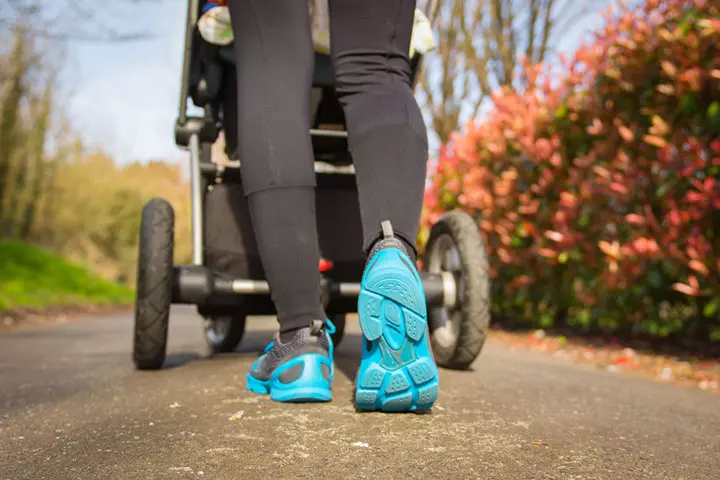
Image: Shutterstock
How soon can you start exercising after childbirth? It depends on a lot of factors, such as whether you had a normal delivery or C-section and how active you were towards the end of your pregnancy. Exercise after pregnancy can help your body recover, make you stronger, and even improve your mood. But since no two pregnancies are the same, it might be a good idea to consult with your doctor before you start working out. Below we discuss the exercise suggestions and guidelines that you need to follow and the right time to exercise after pregnancy.
When Can I Start Exercising After Having A Normal Delivery?
Image: Shutterstock
You can start working out a few days after birth if you had a healthy pregnancy and were physically active throughout the pregnancy. Start by doing gentle exercises that aim at strengthening your abdominal and back muscles. You can work out for about 20 to 30 minutes a day. Don’t continue if you feel any pain (1). You can also take a 20-minute gentle walk while pushing the pram.
It’s best to start by doing low-risk workouts such as pelvic floor and abdominal exercises in the first few weeks after delivery. Though swimming is a great workout, it’s best to avoid it for the first 7 days after birth until your postnatal bleeding stops and you’ve had your checkup with the doctor (2). But if you’re planning on doing high-impact exercises, it’s best to hold off until you have your 6-week postnatal checkup. While it might be safe to do certain exercises, running, Zumba, and other high-impact workouts can strain your body. So, talk to your midwife or doctor before you start working out.
When Can I Start Exercising After Having A C-Section?
Image: Shutterstock
Unlike normal delivery, a cesarean section requires longer recovery time. Your doctor might advise you to avoid any exercises for about 6 weeks after giving birth, but you might still be able to do pelvic floor exercises. Avoid any exercises that may put pressure on the scar such as sit-ups, crunches, or lifting heavyweights. Your doctor might give you the go-ahead to start doing low impact exercises 4 to 6 weeks after giving birth. However, if you feel any pain, discomfort, or pulling sensation in your stomach, stop. Since cesarean takes longer to heal, avoid any high-impact exercises for about 3 to 4 months (3).
Is It Safe To Exercise If I’m Breastfeeding?
Image: Shutterstock
There’s no reason why you shouldn’t work out if you’re a breastfeeding mum. For a comfortable workout routine, always feed your baby first before you start exercising. This way you wouldn’t have to deal with any discomfort caused by engorged breasts. Opt for a sports bra that provides the right support to your breasts while working out, and you’re good to go (4).
Signs To Lookout For
Image: Shutterstock
Women have a higher chance of injuring their ligaments and muscles soon after giving birth. Your body produces a group of hormones called relaxin during the early months of pregnancy to make your ligament more elastic and prepare your body for childbirth. This can make your ligaments much more supple for about 4 to 5 months post-delivery. Hence it is best to avoid any strenuous activities in the months following childbirth. If you feel any pain or discomfort, stop working out. Also, if you notice that your postnatal bleeding changes color or gets heavier, it could be a sign that you are working out too much (5).
Working out after pregnancy has many benefits. It helps promote postpartum weight loss, strengthens and tones the muscles, boosts the energy level, and also helps beat stress. You can start by doing simple exercises and move on to a vigorous routine once your body fully recovers from childbirth. However, before you start, consult your midwife or doctor.

















